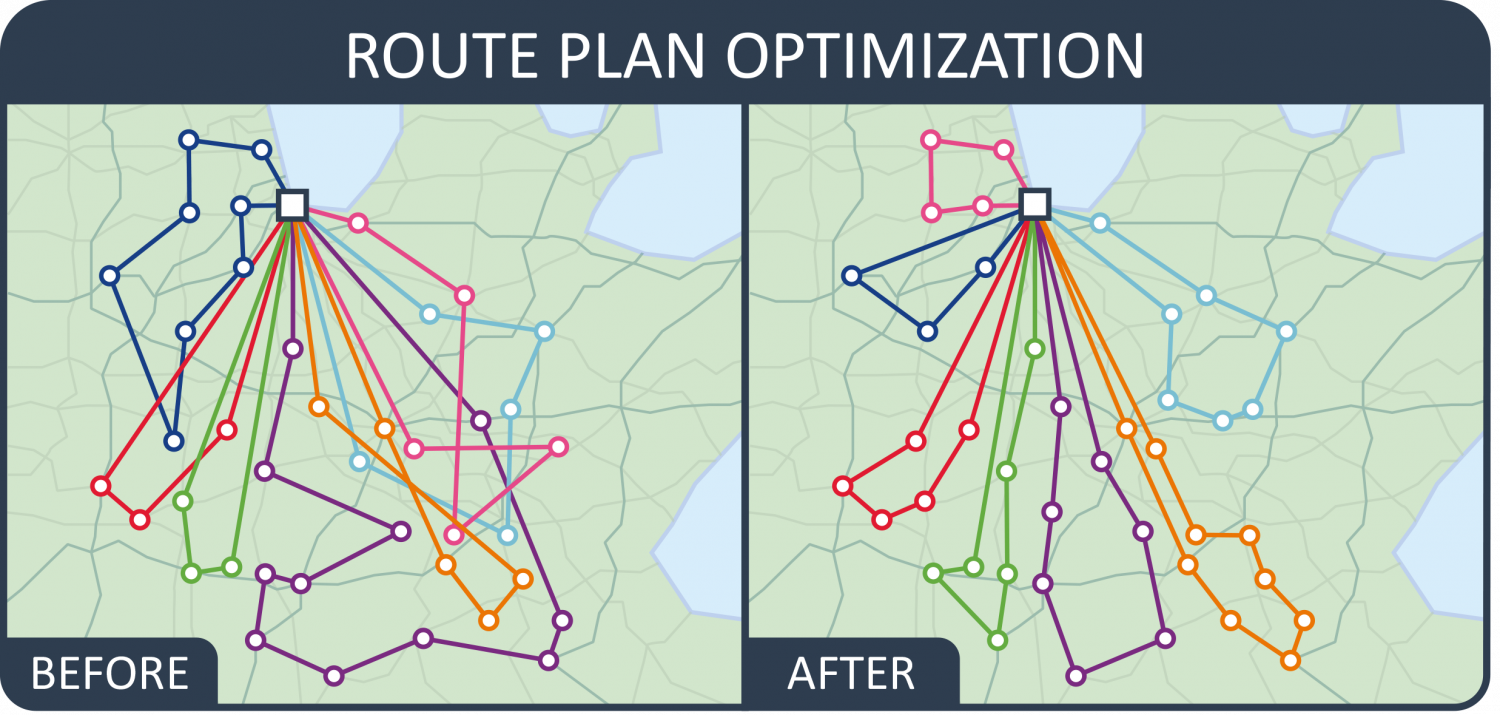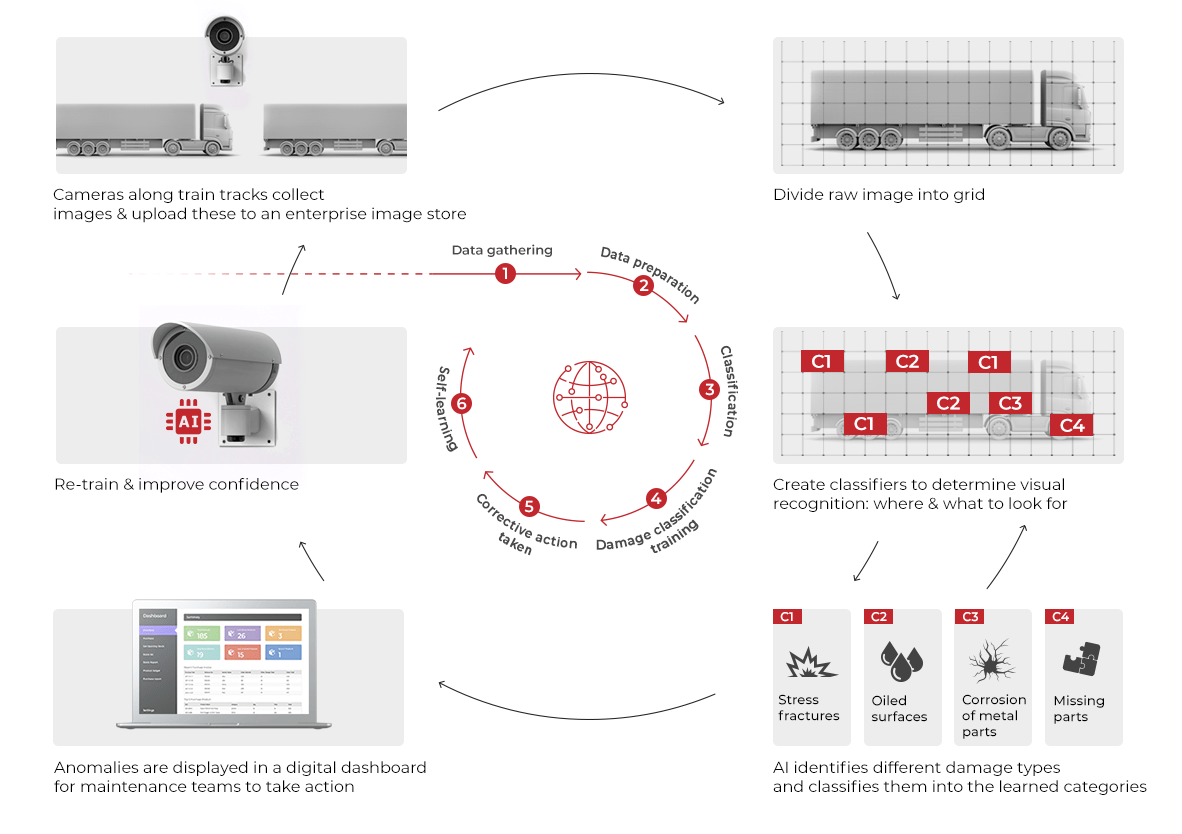Artificial Intelligence (AI) is rapidly transforming the logistics industry, and route optimization is one area where AI is making a significant impact. By using AI, logistics companies can now optimize their routes to improve efficiency, reduce costs, and increase customer satisfaction.

In this article, we will discuss how AI-driven route optimization works, the benefits of using AI for route optimization, and some of the challenges that need to be addressed in order to fully realize the potential of AI for logistics.
How AI-driven route optimization works
AI-driven route optimization uses a variety of data sources to create a detailed map of the road network. This data includes information on the location of roads, traffic conditions, speed limits, and the size and weight of vehicles. AI algorithms are then used to analyze this data and find the most efficient routes for each vehicle.

AI-driven route optimization can take into account a wide range of factors, including:
- The location of customers and their delivery requirements
- The current traffic conditions
- The size and weight of the vehicles
- The fuel efficiency of the vehicles
- The time of day
By taking all of these factors into account, AI-driven route optimization can create routes that are both efficient and cost-effective.

Benefits of using AI for route optimization
There are many benefits to using AI for route optimization, including:
- Improved efficiency: AI-driven route optimization can help logistics companies to improve efficiency by reducing the distance traveled and the amount of time spent on each route. This can lead to significant cost savings.
- Reduced costs: By optimizing routes, logistics companies can reduce the amount of fuel used and the wear and tear on their vehicles. This can lead to significant cost savings.
- Increased customer satisfaction: By delivering goods more quickly and efficiently, AI-driven route optimization can help logistics companies to improve customer satisfaction. This can lead to increased sales and profits.
- Reduced carbon emissions: By optimizing routes, logistics companies can reduce the amount of CO2 emissions released into the atmosphere. This can help to improve air quality and reduce the impact of climate change.

Challenges of using AI for route optimization
While AI-driven route optimization offers a number of benefits, there are also some challenges that need to be addressed in order to fully realize its potential.
- Data collection and management: In order to create accurate and efficient routes, AI algorithms need access to large amounts of data on the road network, traffic conditions, and the size and weight of vehicles. Collecting and managing this data can be a challenge, especially for logistics companies with a large number of vehicles and customers.
- Algorithm development: Developing AI algorithms that can accurately and efficiently optimize routes is a complex and challenging task. The algorithms need to be able to take into account a wide range of factors, including the current traffic conditions, the size and weight of the vehicles, and the time of day.
- Deployment and maintenance: Once AI algorithms have been developed, they need to be deployed and maintained in a way that ensures that they are always up-to-date and accurate. This can be a challenge, especially for logistics companies with a large number of vehicles and customers.

Despite these challenges, AI-driven route optimization is a promising technology that has the potential to significantly improve the efficiency and cost-effectiveness of logistics operations. As the technology continues to develop, we can expect to see even greater benefits from AI-driven route optimization in the years to come.
Here are some specific examples of how AI-driven route optimization is being used by logistics companies today:
- Amazon: Amazon uses AI to optimize the routes of its delivery drivers. The company's algorithms take into account factors such as the location of customers, the current traffic conditions, and the size and weight of the packages. This allows Amazon to deliver packages more quickly and efficiently, which in turn leads to increased customer satisfaction.
- FedEx: FedEx uses AI to optimize the routes of its freight trucks. The company's algorithms take into account factors such as the weight and dimensions of the freight, the fuel efficiency of the trucks, and the current traffic conditions. This allows FedEx to reduce the cost of shipping freight, while also ensuring that the freight is delivered on time.
- UPS: UPS uses AI to optimize the routes of its delivery drivers. The company's algorithms take into account factors such as the location of customers, the current traffic conditions, and the size and weight of the packages. This allows UPS to deliver packages more quickly and efficiently, which in turn leads to increased customer satisfaction.


These are just a few examples of how AI-driven route optimization is being used by logistics companies today. As the technology continues to develop, we can expect to see even greater benefits from AI-driven route optimization in the years to come.
Post a Comment